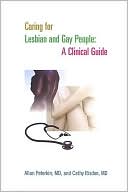Heterosexism In Health And Social Care
The changing political landscape requires new understandings of the social conditions of lesbian, gay, bisexual and transgender (LGBT) people for which the term homophobia is inadequate. The author develops a theory of heterosexism to conceptualize LGBT oppression and provides examples from everyday health and social care environments. This timely study engages with current debates, including intersecting identities, and presents a coherent analysis of LGBT health and social care needs. It...
Search in google:
This interdisciplinary text develops a theory of heterosexism and provides everyday examples from health and social care.
List of Tables and Figures xAcknowledgements xiUnderstanding Heterosexism in Health and Social Care 1What is Heterosexism? 3Understanding homophobia 3Towards a theory of heterosexism 8Assessing the Health and Social Care Needs of Lesbians, Gay Men and Bisexuals 28The legislative framework 28Developing a health and social policy agenda for LGBT people 28Community safety 31Heterosexism and homophobic bullying in schools 34Domestic abuse in same-sex relationships 36Eating disorders among gay men 38Mental health 40Substance misuse 42Sexual health 45Housing 47Parenting 47Intersecting Identities: Recognising the Heterogeneity of LGBT Communities 52Young LGB people 53Older LGB people 55Black LGB people 59Disabled LGB people 70Bisexual men and women 75Transgender people 78Working class lesbians, bisexuals and gay men 88LGB people living in ruralcommunities 91Towards inclusive health and social care agendas 91Conducting Research among LGB Communities 92Methodological challenges in LGB health and social care research 92Defining lesbians and gay men 93Sampling issues in LGB communities 98Developments in LGB non-probability research 105What are the Demographic Characteristics of the LGB Population? 112How many LGB people are there in the UK? 112Where do LGB people live? 114What is known about the social characteristics of LGB people? 117Exemplars of Heterosexism from Research 125Disclosure and Non-disclosure: Lesbians' Strategies of Accommodation and Resistance in their Interactions with Health Professionals 127Concepts of the closet and coming out 127Is the concept of the closet still relevant? 129Disclosure and non-disclosure in health care 130The heterosexual presumption 142Relevance of sexual identity to health care 143Screened Out: Lesbians' Experiences of Cervical Screening 148Relationships with health care professionals 148Attitudes and behaviour of health professionals 150Aspects of the procedure 154Experiences of smear tests 157Risky Bodies? Lesbians and Breast Cancer 164Introducing risk 164What do we know about lesbians' breast cancer risk? 167Combining data to explore risk perceptions 169Qualitative data about risk perceptions 172New Directions in Equality Agendas: Opportunities and Threats 193The legacies of political activism and lobbying 193Equal citizenship? 194Diversity and social inclusion 195The CEHR: the new single equality body 196Human rights 198Hierarchy of equalities 201The case for a positive duty on sexual identity 202Appendices 207Overview of historical and recent legislation 209Abbreviations 213References 215Index 231


